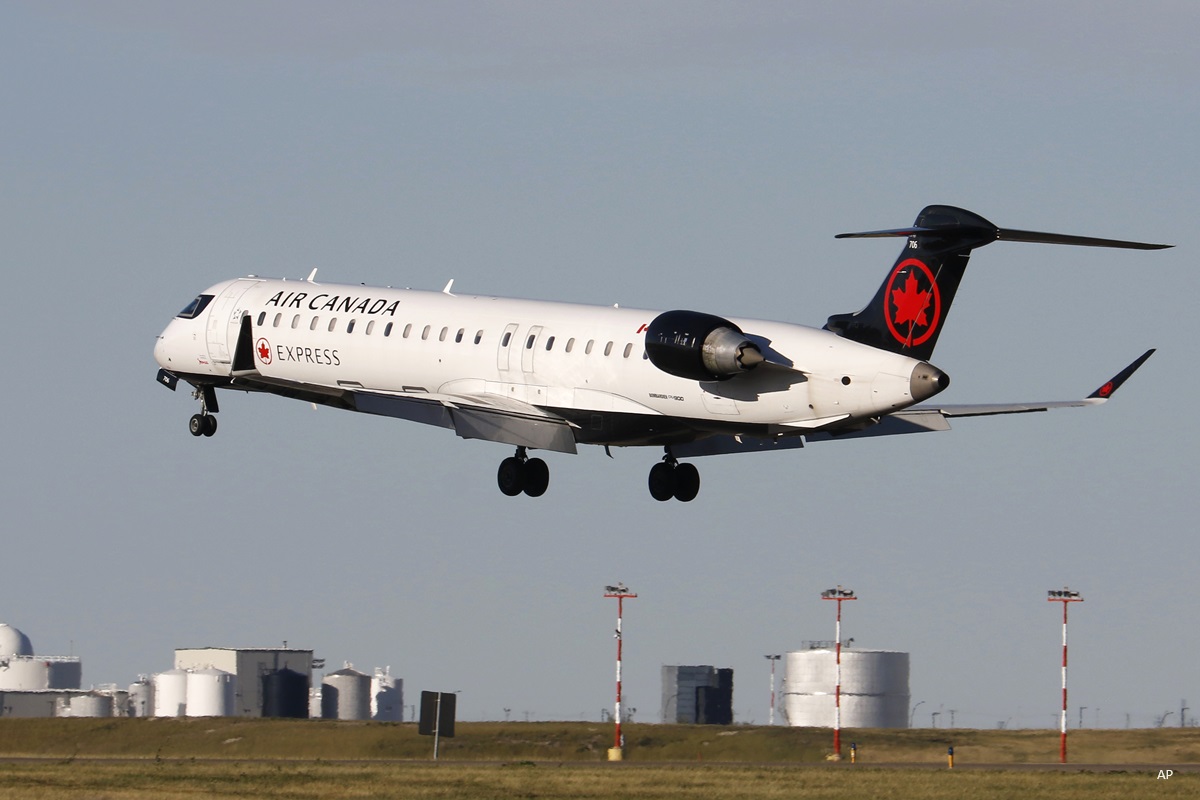
Editor's note: Read the latest on how the coronavirus is rattling the markets and what you can do to navigate it.
The coronavirus outbreak, travel bans and spooked travellers abandoning their travel plans are wreaking havoc on the airline industry. The SARS epidemic in 2003 cost global airlines a whopping US$7 billion, but financial hit from the COVD-19 outbreak will certainly surpass that of SARS, according to Morningstar equity analyst, Ivan Su. According to the world airline association The International Air Transport Association (IATA), the coronavirus outbreak could cost airlines as much as US$30 billion in revenue.
It’s little surprise that the airline stocks are amongst the hardest hammered as stocks within the wider travel industry that continues to nosedive. “Global air traffic has materially slowed in the wake of the coronavirus outbreak, which we expect will adversely affect near-term revenue growth, profitability, and cash flows,” says Morningstar Equity Analyst, Burkett Huey.
The far and fast fall of airline stocks from their all-time highs has created attractive openings for investors looking for value opportunities. Beyond the short-term headwind, though, the airline industry has secular long-term tailwinds supporting its cheery outlook. The global airline industry is forecasted by IATA to net US$29.3 billion in profit in 2020 as supportive central bank and fiscal policies worldwide lower the risk of economic weakness. While those 2020 profit numbers may need revision, the following airlines are well-positioned to benefit from long-term industry trends once the virus frenzy blows over.
| United Airline Holdings Inc. | |
| Ticker: | UAL |
| Current yield: | - |
| Forward P/E: | 2.36 |
| Price: | US $34.05 |
| Fair value: | US $61 |
| Value: | 57% discount |
| Moat: | None |
| Moat trend: | Stable |
| Star rating: | ***** |
| Data as of Mar 24, 2020 | |
Leading U.S. carrier, United Airlines (UAL) operates more than 4,500 daily flights to five continents. The airline’s hubs include San Francisco, Chicago, Houston, Denver, Los Angeles, New York/Newark, and Washington, D.C. In 2018, United clocked US$41.3 billion in revenue.
The postrecession shakeout and wave of consolidation allowed leading U.S. airlines to “capture nearly 80% of the domestic market, ushering in record profit margins and consistent economic profits,” says a Morningstar equity report, noting that airline profit margins expand when oil price fall fares rise.
CEO Oscar Munoz and president Scott Kirby have been taking measures to improve profitability. “In shifting strategies, United aims to improve network breadth, or connections to small cities, increase daily flights to spokes from hubs, and take advantage of the benefits of upgauging,” says Huey, adding that the strategy could ramp up system capacity and “catch up with Delta and American by offering nonstop service to regional markets.”
If the strategy proves successful, it could lead to a positive spillover effect in the carrier’s frequent-flier program, which currently contributes nearly 50% of United’s operating income. “United’s frequent-flier program will continue delivering a solid boost to operating margins and help the company remain profitable through our midcycle period,” says a Huey, who puts the stock’s fair value at US$90, and forecasts 2.7% average revenue growth between 2020 and 2023.
Based on management's aggressive expansion plans, Huey projects average revenue growth above 4% in 2020, boosted primarily by domestic markets as management pushes to improve connectivity and bolster its U.S. hubs.
These numbers, however, could be revised to reflect various flight cancellations and route suspensions forced by the coronavirus outbreak.
| American Airlines Group Inc. | |
| Ticker: | AAL |
| Current yield: | 3.90% |
| Forward P/E: | 2.32 |
| Price: | US $13.93 |
| Fair value: | US $22 |
| Value: | 53% discount |
| Moat: | None |
| Moat trend: | Stable |
| Star rating: | ***** |
| Data as of March 24, 2020 |
After absorbing US Airways, American Airlines (AAL) grew larger than Delta and United on an available seat per mile basis. American operates almost 7,000 flights per day to more than 350 destinations in 50 countries from hubs in Charlotte, Chicago, Dallas/Fort Worth, Los Angeles, Miami, New York, Philadelphia, Phoenix, and Washington, D.C.
The carrier is expected to generate over US$4 billion in revenue and cost improvements through 2021. Further, it is expected to “benefit from deepening feed routes at domestic hubs and by cutting unprofitable routes like Chicago to Shanghai,” says a Morningstar report.
The airline’s network optimization and growth initiatives are crucial to the success of its loyalty program, from which it draws 30% to 50% profit margins. “American will need to maintain the success of its frequent flier program if it wants to continue cleaning up its balance sheet,” says Morningstar sector director, Brian Bernard.
In the near term, though, American and its peers aren’t immune from the financial hit from the slowdown in global traffic caused by the coronavirus. After reassessing key valuation assumptions, Bernard decreased the stock’s fair value estimate from US$31 to US$28, to reflect slower global macroeconomic growth and decelerating total revenue growth in 2020, primarily due to lower load factors.
That said, given American's geographic exposure (74% domestic), the impact of the airline's reduced service to Asian countries will be limited. “[We are] more concerned about decreased domestic capacity and demand (American announced a 7.5% decrease in domestic capacity),” Bernard notes.
The coronavirus, he adds, will likely result in a temporary shock to the U.S. economy over the short run, “but we expect air traffic will improve thereafter and could overshoot normalized demand for a period as pent-up demand.”
| Southwest Airlines Co | |
| Ticker: | LUV |
| Current yield: | 2.13% |
| Forward P/E: | 7.97 |
| Price: | US $41.28 |
| Fair value: | US $56 |
| Value: | 26% Discount |
| Moat: | None |
| Moat trend: | Stable |
| Star rating: | **** |
| Data as of Mar 24, 2020 | |
Southwest Airlines Co (LUV), the largest U.S. domestic carrier by the number of originating passengers boarded, operates over 700 aircraft in an all-Boeing fleet. The airline specializes in short-haul flights, using a point-to-point network, but has been expanding into longer routes.
“Southwest’s years of sticking to its low-cost knitting combined with prudent network decisions allowed the carrier to grow from a small, intrastate operation into a major carrier controlling 24% of the U.S. domestic market and serving 11 countries,” says a Morningstar equity report.
It would be difficult for today’s low-cost carriers to replicate Southwest’s domestic presence. “Exceptional execution of its low-cost-carrier strategy, which includes fleet commonality, point-to-point flying at secondary airports, short-haul routes, and a distinct company culture,” have underpinned Southwest’s consistent profitability for more than 40 years, says Bernard, who pegs the stock’s fair value at US$56.
As well, unlike most of its larger peers that rely on third-party vendors for ticket sales, Southwest uses its own distribution channel, which accounts for roughly 85% of bookings.
The carrier commands the largest percentage of U.S. domestic market travel of any major carrier. “Southwest operates with enough frequency to attract business travellers and at enough airports to consistently compete for customers,” says Bernard, pointing out Southwest still holds considerable presence in many midsize markets where it holds more than 50% market share.
As opportunities become increasingly scant in short- to medium-haul routes that fit its point-to-point low-cost strategy, the airline has begun to pursue international and long-haul domestic routes, which could weigh on profit margins, cautions Bernard.
Are you getting the right returns?
Get our free equity indexes to benchmark your portfolio here






















